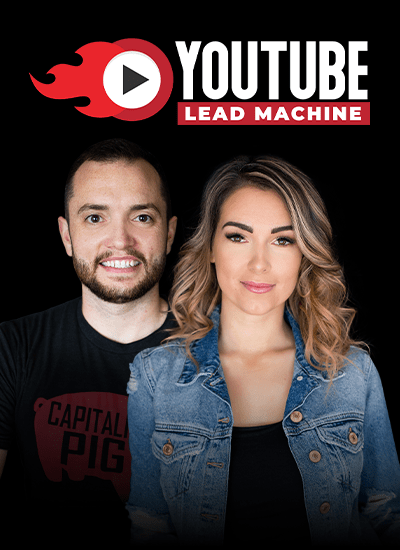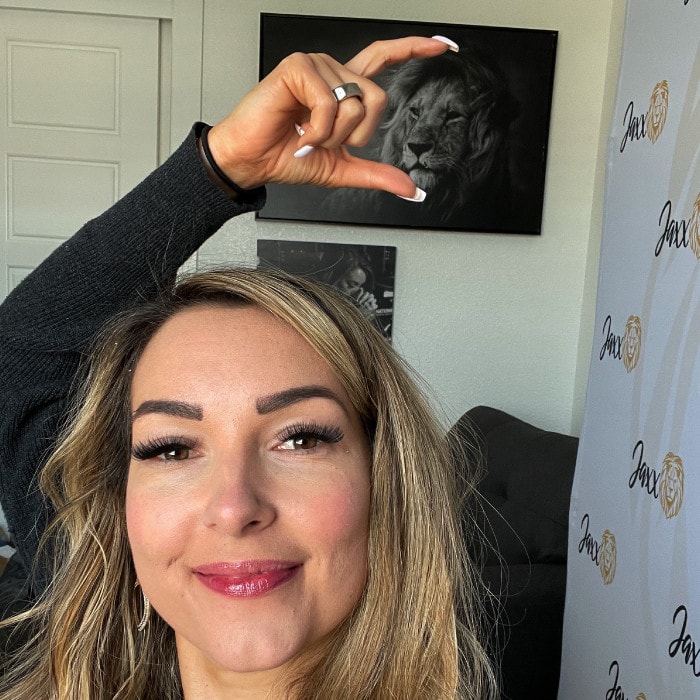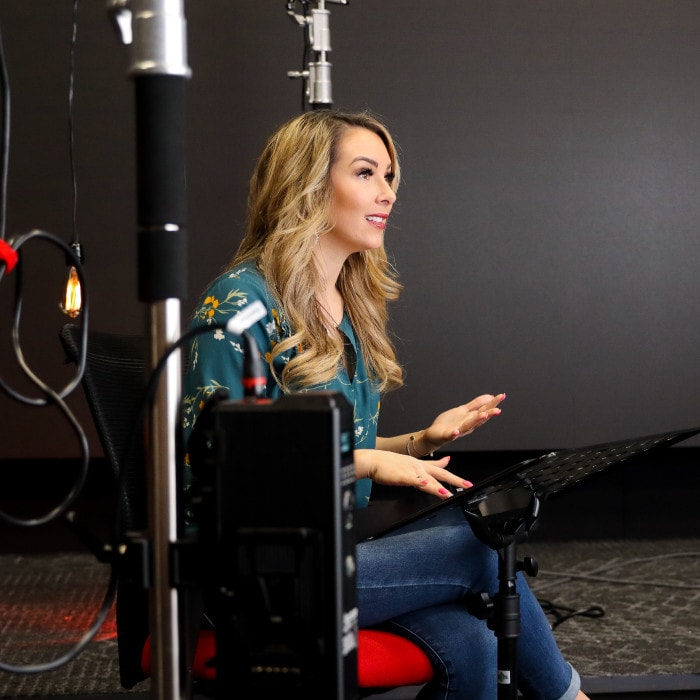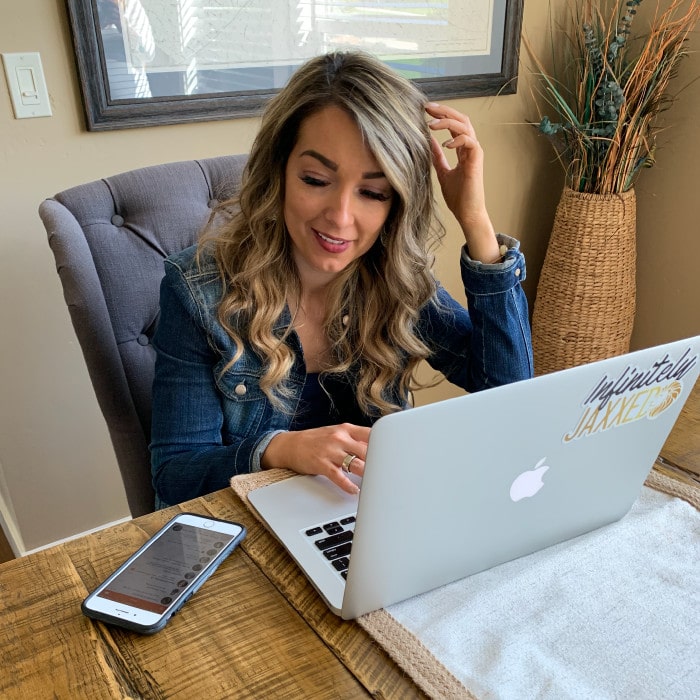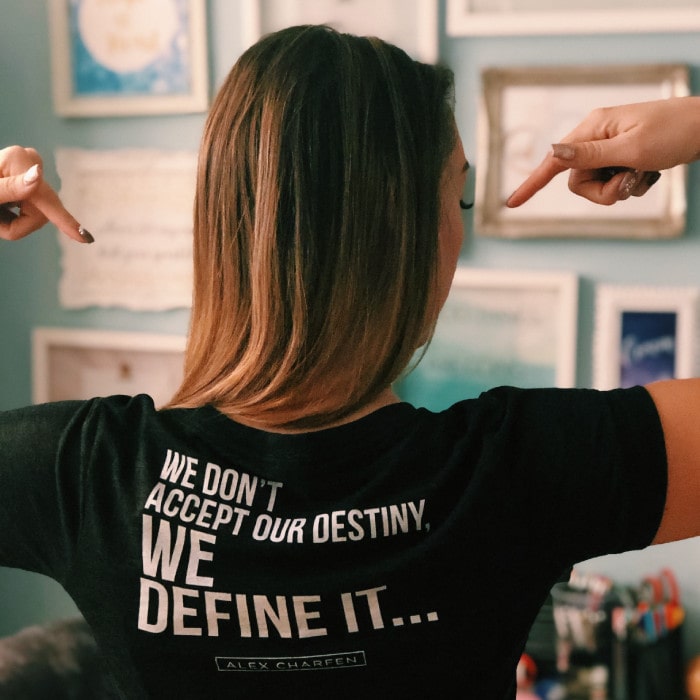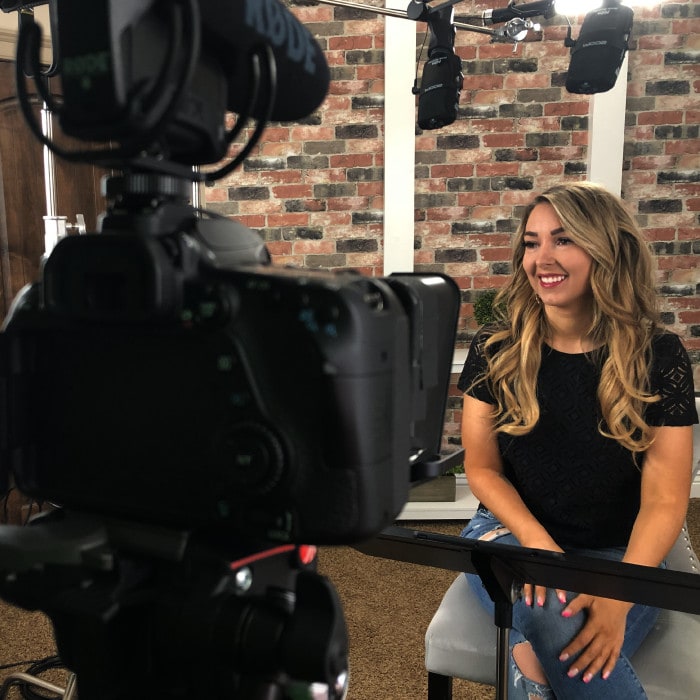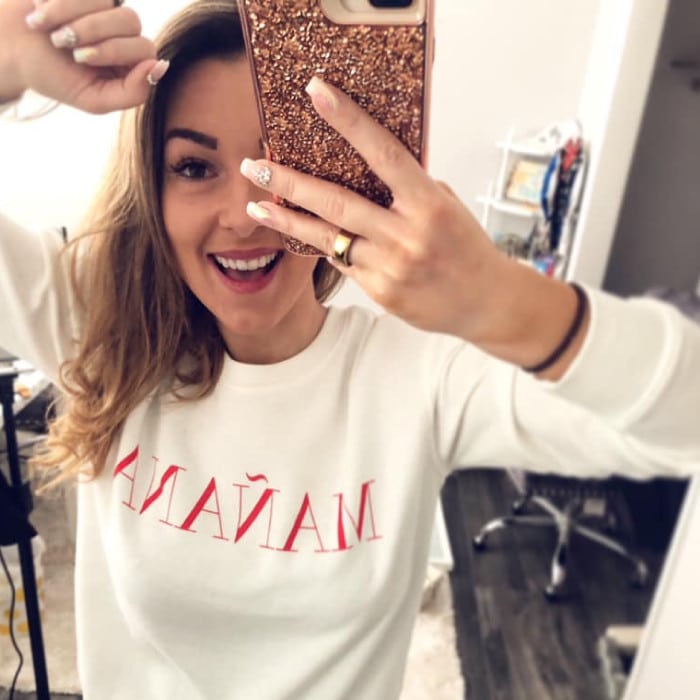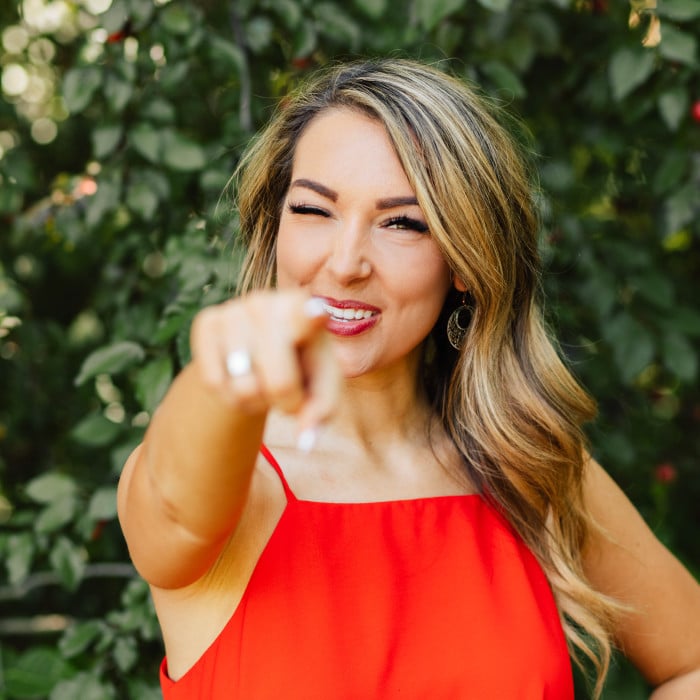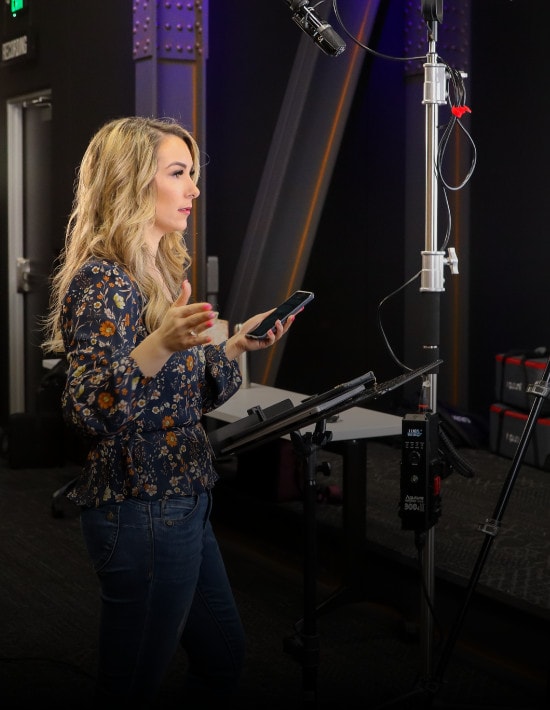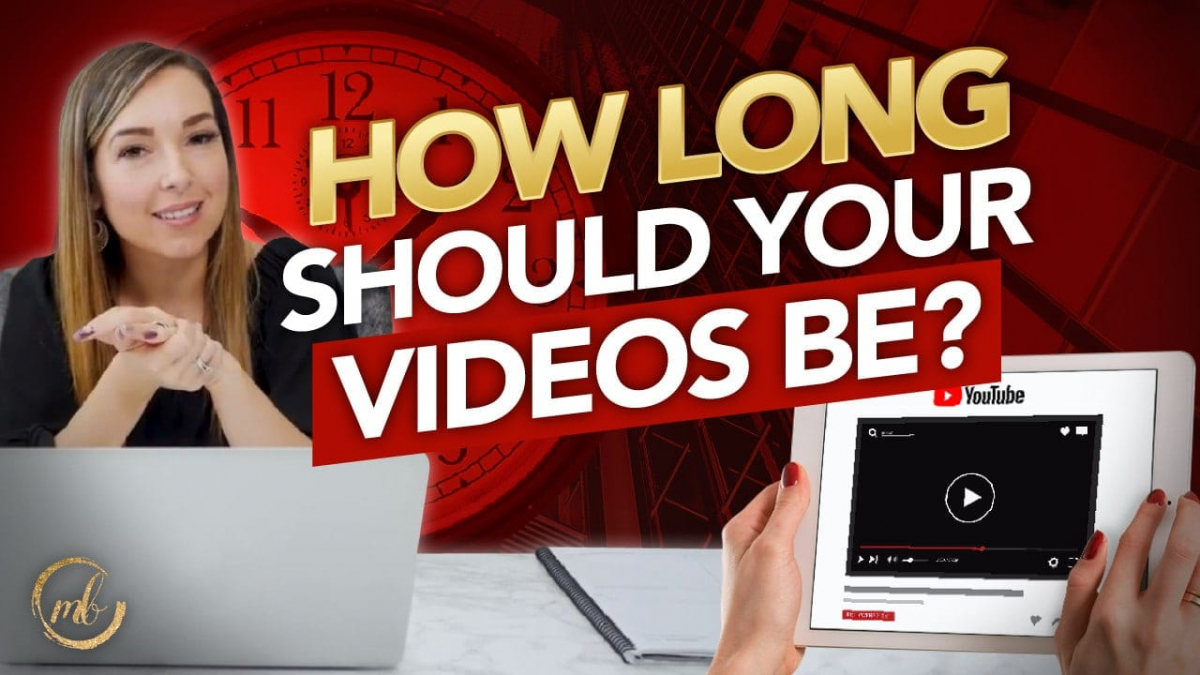How Long Should Your Videos Be (Youtube Video Length in 2019)
Join the VIP Code here!
Register for my FREE MASTERCLASS TRAINING:
How to Create 60 Days of Social Media and Video Content in 8 Hours
Get your FREE Thought Leader Handbook
How long should your YouTube videos be? Is that the right question to ask? Is it just a formula of how long should it be and just do everything you can to make it eight minutes or 20 minutes?
It’s not about how long your YouTube videos should be. It’s about how much can you retain people to keep watching them. YouTube values watch time and retention. So some of the biggest analytics you want to be looking at is yes, of course you want to grow those subscribers, but you also want to see how long are people actually watching your content. Because you can have a 10-minute video and have people watch 90% of it, which YouTube sees as a great video with authority, that it’s keeping people on their platform.
YouTube is going to reward creators who keep people on their platform. So if you have longish or long enough videos that are keeping people retained, and people are watching lots of your content, those videos are going to get boosted up in the rankings, and they’re going to put more people in front of your content. But if you have short videos, and if people aren’t watching as much of them, even if you have long videos and people aren’t watching very much of them, YouTube is going to go don’t like them, put them on the back burner.
So while I can say videos between eight to 20 minutes are optimal, it’s also about how long can you keep people watching throughout the whole thing. So we explored all of the ways that we can make our videos long, while keeping people engaged and loving our videos.
The first one is open up your videos with a dramatic hook or something that really catches their attention right from the beginning. You know when you watch, maybe, a soap opera, and the first scene is this high point of drama that leaves you guessing and wanting more, and then even throughout the whole show, there’s always this drama and this open loop, a cliffhanger before every commercial break that has you going oh, my God, I have to see what Luke and Laura did, and what Sunny did, and oh, my God. I haven’t watched soap operas in a while. I hope those names are still current. So it leaves you wanting more and thinking what happens next that you can’t take your eyes off this.
Another creator who is so good at this is Casey Neistat. I find myself wanting to watch his videos, and I just want to come for what the thumbnail had or what the title of the video was, so that I could just see that part. But next thing you know, I’m 25 minutes down the rabbit hole, and all of his content was so good and kept me wanting more.
Another way is to tease something that’s going to show up later in the video, so they know they have to stay and watch until we get to that point to be able to see and get the payoff of what happened. You can start the video by saying, “In this video, I’m going to be sharing with you,” or “I’m going to show you the behind the scenes,” or “I’m going to show you what really happened,” or even give a little glimpse of what that looked like, and then cut it, and in your editing go into a different piece of content while it still leads up to what’s showing up later in the video. Kinda like how when you’re watching TV, and in the commercials, it shows a preview of what’s coming up in the next episode, which makes you think, I have to tune in. I have to watch that episode, so that I can be relieved when I find out what happened, what they teased, and what they opened a loop for. I have to watch the full thing to be able to see.
A common way of keeping people engaged throughout the whole video is with your editing, and we do these things called pattern interrupts. You can also call them attention resets. And you might notice, and even if you go back to all of my videos, you’ll see how we put this into play, and it’s something that’s so subtle but at the same time, makes a huge difference. Imagine if you were watching an episode of “Friends,” and we just had one camera in the corner of Monica’s apartment, and all you saw was this just bird’s-eye view of the whole conversations and everything happening, but when you actually watch the show, you see a closeup of Joey and Chandler, and then you see a wide view of Joey and Chandler and Monica sitting at the table, and then it zooms in and the music heightens as there’s this high point of drama, and it brings the viewers along a journey. And because of that, they’re more engaged with what they’re watching because the music, the background, the changes in the patterns, that’s why we call them pattern interrupts, are keeping them so engaged with what is happening that they don’t want to miss a beat. Another thing you might notice creators doing is time lapses and this is another thing that you can do in Movie Magic and editing and making things look really cinematic. And think of even movies, when you see a transition between scenes, sometimes they have this time lapse.
Casey Neistat is the king of these time lapses, that he’ll show the scenery of New York, or he’ll show him on his run. You’ll see makeup YouTubers, that they do their makeup, and they put it on time lapse, or people when they’re cooking. So you don’t have to stay and watch the boring stuff of mixing the eggs or putting on the powder. Sometimes you can watch through all of that, especially if there is good commentary, but if you want to speed up and go through a time lapse, which also brings people through the journey and being able to see each step but in fast motion, so that we don’t lose them, and they’re not snoozing while they’re watching your content.
These are all just suggestions, great suggestions, that we’ve seen so many YouTube creators do, but one thing that you want to do is test. See what your audience likes, because my audience may be quite different from your audience, and the best way to know is, first of all, by asking them. If they have a comment about their video, you can say, “Comment below and let me know what you thought of this video,” or if you even have a very warm audience that you can specifically ask, “Hey, was there any point in my video that you didn’t like?”
The other thing is that you should always look at your YouTube analytics. You can actually see in every individual video, the watch time, and you can see, as it starts with a high engagement in watch time at the beginning, and then as it slowly decreases, and you can see if there is a specific point where people drop off, and that’s where I want you to learn from experience by seeing what people are and how they’re reacting to it. Is there a specific part where a whole bunch of people, it just has a hockey stick, dead, stop? Or is it something that gradually slows down? And this is where we want to look and see, did I say something at that point that turned people off? And it doesn’t always have to be turned people off. It could be, did I turn them off or did I give the solution to what it is that they came for, and then they were like, “Awesome, now I don’t need to watch the rest of the video.” So look at your analytics to find out how your videos are performing and learn from them. When you how your watch time is performing and see how you’re performing in your current videos and any future videos, you can learn from that to adjust your strategy to exactly what your audience is responding to.
The big thing to remember is that YouTube rewards creators who keep people retained. So if you can make longer videos, like eight minutes to 20 minutes, and yes, some videos can still be short. I still have lots of short videos on my channel that are just straight and to the point. They still get good watch time, but we want to increase your average view duration. I’ve seen creators that have channel or have videos on their channel that are a minute long, and even if you have people watching 100% of that minute-long video, your average view duration is pretty low, and YouTube wants creators that are keeping people on their platform for longer. So try to make your videos eight minutes to 20 minutes. There are even creators who make 45-minute videos, hour-long videos. The point is if you can keep people retained and even turn it into maybe a series.
Shane Dawson is great at this, that he has these 45-minute series, and it’s almost like a back-to-back documentary, and people are watching the whole way through because of how he’s keeping them engaged and bringing them along a journey. So how can you bring your viewers along a journey? That’s the big question to ask and see how you can keep them retained, and also, on top of retention, is how you can convert them to your email list. How can they now be on your email list, so you can communicate with them and potentially sell them into any products or services that you offer?
For more video marketing tips, be sure to subscribe and click the link below. I have a ton of resources for you to be able to build your channel and grow your impact and profit. And join my VIP code.

